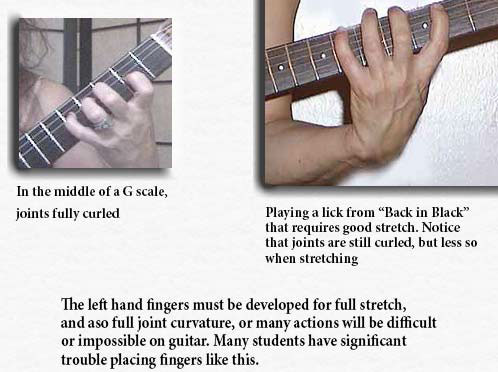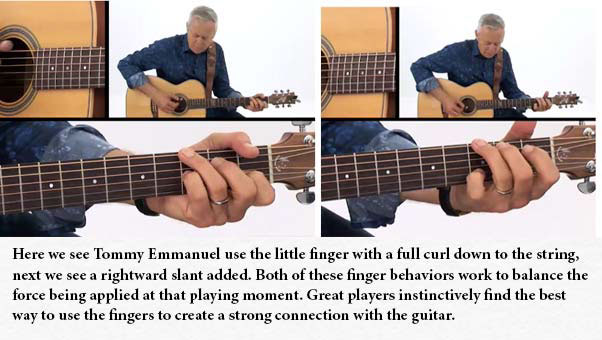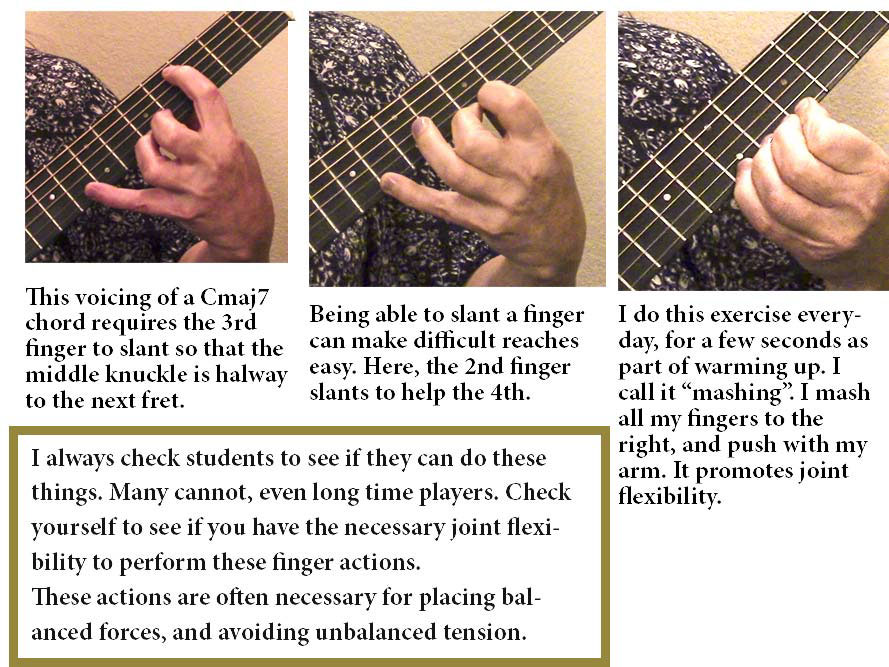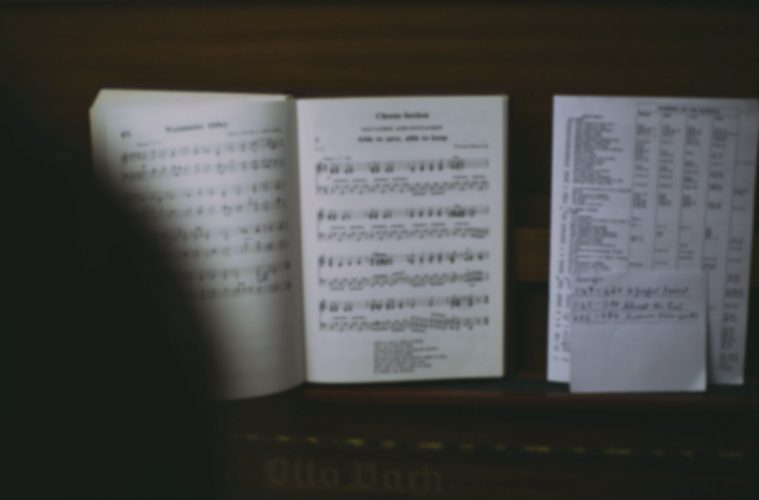All good guitar players have one thing in common – they make it look easy, in fact, they make it look effortless. That is because, for them, it is easy. But what is the secret of “effortless” playing?
Our world is full of incredible guitar players, and also full of incredible guitar lessons, both of which are amply represented at TrueFire. You can learn the secrets of all the great players, learn their scales, licks and techniques, and see them demonstrated. The problem for many students comes when they try to do it themselves! So often, I get students who are struggling to actually play the wonderful music they find in the lessons they study. Whether it is rock, blues or fingerstyle, technique is what comes between so many guitar players and the music they want to make.
That is why the focus of my teaching is not to teach people what to play, but rather, how to play whatever they want to play, and how to play it at the professional level. To do this, it is necessary to understand what guitar playing is all about, on a very fundamental level, and a very physical level. All good players have this understanding, consciously or intuitively, and the way they relate to playing and practicing is based on this understanding.
Once we understand these fundamentals, we are able to travel this path to effortless playing ourselves. We become able to train our fingers to play whatever they wish. Then, all the wonderful lessons available become so much more useful and satisfying. The desire to convey this vital knowledge lead me to write “The Principles of Correct Practice For Guitar”, and 20 years later, to carry that work to the next level with “The Yoga of Guitar”. This lesson is derived from both these works.
I am going to give you a roadmap to effortless playing on guitar. If any of these parts of the journey are missing, mastery of the guitar on a technical level (and let’s not forget that our sound and the notes our fingers make ultimately depend on our technique) will be unattainable. If you are looking for that often talked about state of “effortless mastery” on the guitar, here is where to look.
The Path To Effortless Playing
Effortless playing is a step by step process of development. Like any path, if the first step is in the wrong direction, you will never reach the goal. Unfortunately, for many players, the first step was in the wrong direction! The first step in effortless playing is the development of the musculature of the hands and arms in the very particular way required for playing guitar.
For the left hand this means the fingers must develop:
1) Strength
2) Stretch
3) Independence ‐ the action of one finger must not cause tension in the other fingers
4) Curvature – the fingers themselves must be able to curl fully, especially the last joint of the finger, on any string, in any position. This does not mean they always play with curvature, but they must be able to curl fully when needed.
For the right hand this means:
1) The ability to place maximum force on the strings at any speed without tensing the entire arm, whether playing pickstyle or fingerstyle.
A great many players do not achieve these things in their first years as players, and because of this, playing is a struggle. When I want to gauge a students’ overall technique, I ask them to play a scale. I almost always see fingers flying all over the place, and diminishing volume and missed notes on the right hand as the speed goes up, due to static tension in the arm and shoulder that is unfelt by the player. Invariably, I will see the 2 great diseases of the left hand: finger squeeze and finger rise. As one finger plays, the finger next to it will squeeze tightly against the playing finger, or rise into the air. Trying to play smoothly while this is happening is like running a race with a bad knee.
It is instructive to observe that all good players have the ability to play fast and loud when desired, all improperly developed players are not able to play fast and loud, because body tension rises to such a high level that contact with pick or fingers becomes difficult and then impossible, so notes get softer, and then disappear. If you are a player who wishes to play with the ease of a professional, you must first make sure that your fingers have achieved the things listed above.

The Second Step To Effortless Playing
The second step toward effortless playing must develop alongside the first, right from the beginning, and that is the ability to use fingers and pick with a high degree of relaxation at all times. You have probably heard this many times. I was often told “Relax, you have to play relaxed. All the great players are very relaxed when they play.” And I think we all know how completely useless that advice is. It’s like telling the drowning person “Just swim!”. Yeah, if they could do that, they probably would!
Relaxation is not the answer, but it is part of the answer to the question “What is effortless guitar playing about”. When we say “You must be relaxed when you play”, we are speaking as if there were a state called “relaxation” that we must maintain. But in its truest sense, the word “relax” is not indicating a state, it is indicating an action: the action of “returning to laxity”. This means that relaxation is the releasing of the tension created by the necessary effort of muscle contraction that creates movement and brings force to the strings. There is another source of tension that must be controlled as well, and that is the tension created in muscles as the flexible medium of the strings places force back on the body. This fundamental dynamic of guitar playing is generally unappreciated, and needs a little explanation.
Every time your pick or fingers place force on a string to create a note, the string places force back through the pick and fingers, and so into your entire upper body. In order to maintain pick or finger position, you must subtly (or not so subtly!) tense various muscles throughout the upper body, especially the shoulders, with every note you play. Many guitar players greatly over tense in reaction to
this force the string places back to the body, and even worse, they do not relax this tension after a note is played, and carry that tension into the next note. Failure to feel and control this cycle of tension and release will prevent relaxation, speed, power and control in our playing. To understand this is to have a deeper understanding of the meaning of “relaxed” playing.
This interaction between our muscles and the strings they play on should be understood and consciously observed by every guitar player right from the beginning of playing. If it is, the player will avoid the tension problems that keep so many players from reaching the state of effortless playing.
Relax Into The Effort
How do we resolve the conflict between the necessary effort playing the guitar requires, and the need for continuous relaxation? First of all, we must make sure that all efforts are made with the minimum amount of muscle tension possible, as when we use minimum pressure with a finger when it presses a string to a fret, or allow arm weight to do much of the work. Secondly, we should always think of “relaxing into the effort”. This is best done by keeping whole body awareness, focusing on relaxing the whole body as much as possible while making efforts with the fingers. Students who begin to do this usually find they are tensing many parts of their body every time they try that hard chord change or fast scale. They will usually find they are constantly holding their breath as well.
It is especially important to control overall body tension while doing guitar exercises. The strenuous nature of most exercises creates a great amount of excess tension as muscles attempt new levels of stretch and strength, and if it not consciously felt and released, it will build an insurmountable obstacle to professional development on the guitar. I have laid out the path to proper development of all the basic skills needed in guitar playing of any style in my various works, beginning with “The Principles of Correct Practice For Guitar”, and furthered by study of the supporting products I have created, including “How to Master A Scale”, “The 6 Essential Scales”, “Hammers & Pulls”, and “Bar Chord Mastery”, and my “Rock & Blues Foundation Course”. These courses will give any student the ability to play without crippling, chronic tension.
The Third Step: The Dynamic Relationship To The String
As a student receives this training, the third step toward effortless playing is able to emerge – a dynamic relationship to the string. Like a diving board, the string is a flexible medium that possesses its own energy, referred to as potential or elastic energy. A great diver knows how to interact with the diving board in such a way to as connect with and use that energy. A great guitar player knows how to contact the energy of the string and use that energy to propel movement. A good guitar player is literally bouncing on the strings with the right hand, whether pick or fingers, in the same way a great gymnast bounces on a trampoline, absorbs its energy into their body, and directs and uses that energy to propel movements. The opposite of this is as static relationship to the strings, where the muscles are in a state of tension that remains set, regardless of the changing condition of the string. Then, the strings are dead and unresponsive, and feel hard and unyielding. The more we develop the necessary dynamic relationship to the strings, the more the strings feel like rubber bands as we play. It is a wonderful feeling!
A dynamic relationship means that just as the string is alive, and changes in response to every touch and force placed upon it, so is the player alive, responding to every force applied to their body, and to every change in balance created by the movement of fingers, hands, arms and body while they play. Without maintaining a constant state of balance of forces as we interact with the string, we have no chance of playing with ease and flow, which all music demands. In this case, the player will experience chronic tension during playing.
When these 3 developments are in place, the physical development of the fingers, the ability to have fingers work independently of each other, and the ability to relate dynamically to the strings, we are in a position to do what is really required in all our playing. We will be able to play in a way that gives the appearance of, and the sensation of “relaxed playing” we always hear about, often called “effortless mastery”. And that requirement is this: the application of balanced forces to the strings and body of the guitar from the fingers and all points of contact with the guitar as each note is created. In moments during playing where the forces placed on the instrument are out of balance, harmful tension is inevitable. In many cases, this imbalance will place stress on body parts such as the neck or back, and pain will develop.
The Final Step: The Connection
When a player has achieved the necessary developments outlined above, a strong connection between our body and the guitar is maintained during playing. This union of body and guitar is the doorway through which the music we feel emotionally is able to enter.
Complex and difficult music requires a highly developed and highly refined connection, simpler music requires a connection more easily achieved but necessary nonetheless. The fingers must be able to perform certain actions in order to create this connection. I like to watch great players and observe them doing various things to create this connection as they play. I was recently watching Tommy Emmanuel, and noticing how at various times he will curl the joints and slant a finger to the right as they fret a note. I call this placing side force on the string, a necessary action of the fingers in many cases. But many students are literally unable to slant their fingers in this way when asked to do so, because they have not developed the necessary joint flexibility.

This connection is the true source of power, control, and security in our playing. Those who are able to create this connection know how to use the fingers of the left hand, the pick and/or the fingers of the right hand, as well as all points of bodily contact with the guitar to create this connection in every playing moment. The particulars of this balance of forces change at every moment of playing, and the player must instantly adapt and respond in every moment, in the same way a tightrope walker must respond to the changing condition of the tightrope with every step in order to maintain the connection.

Many players who can do this may not know they are doing it because this is often an intuitive or acquired knowledge of the body itself. Guitar prodigies intuitively relate to the guitar this way, from the beginning or soon after starting, so they make very fast progress. That is why I define talent as “The tendency to do the right thing”. However, this knowledge can be taught and understood consciously, which makes it possible for anyone to gain these abilities for themselves.
To reach the state of effortless playing requires great effort. Do not think you can travel the path in a week, a month or a year. It takes many years of sincere effort to bring all these factors into being, and bring them to maturity. In fact, it is an endless road. Pablo Casals was asked why he still practiced in his nineties. He said “I find I am getting better”.
To see an illustration of how creating the necessary connection between body and guitar helps us make our music, watch this video. A student was learning “Dear Prudence” and kept stumbling on a chord change. I showed him how placing force on the body of the guitar with the right arm, while placing an opposing force on the neck with the left arm enabled the fingers to easily make the change accurately while keeping the fingerpicking pattern going.


